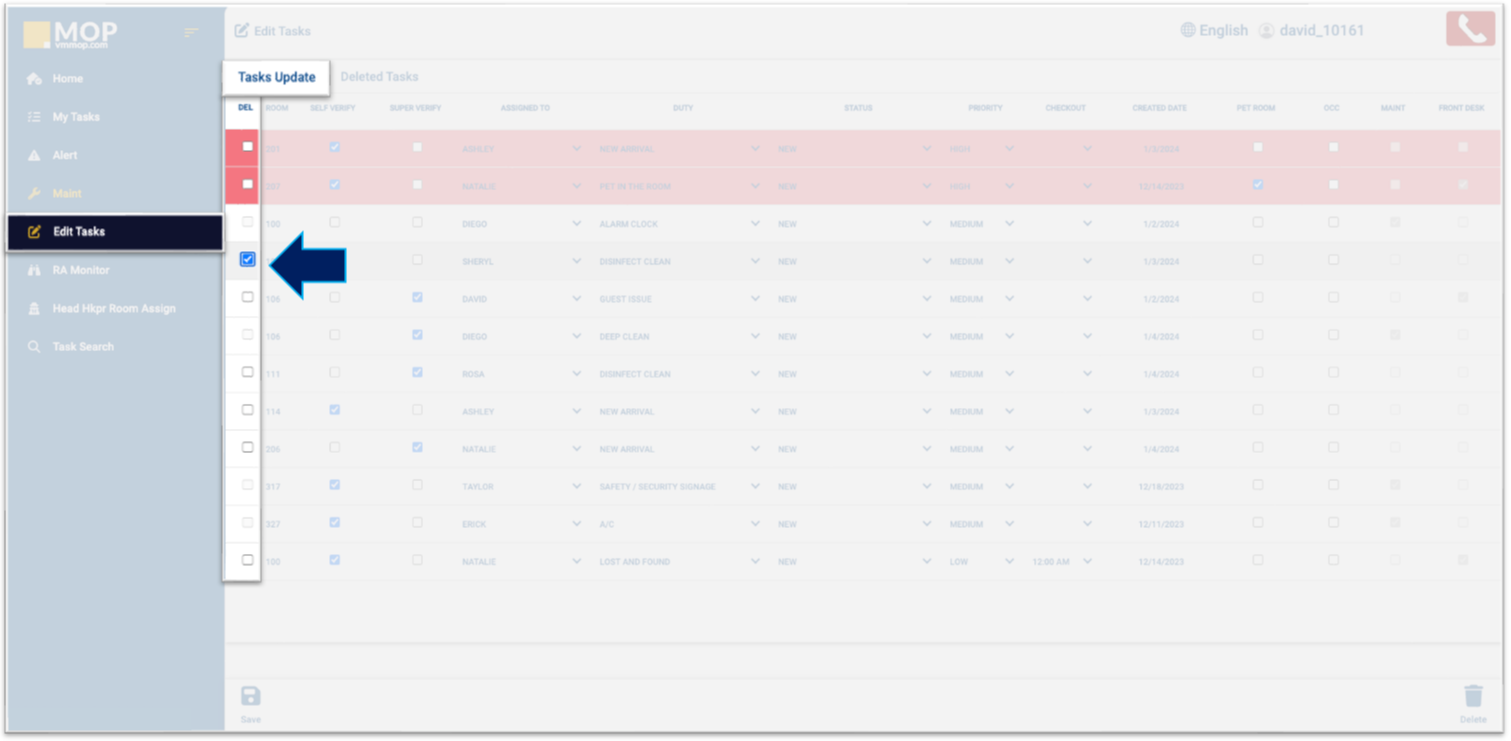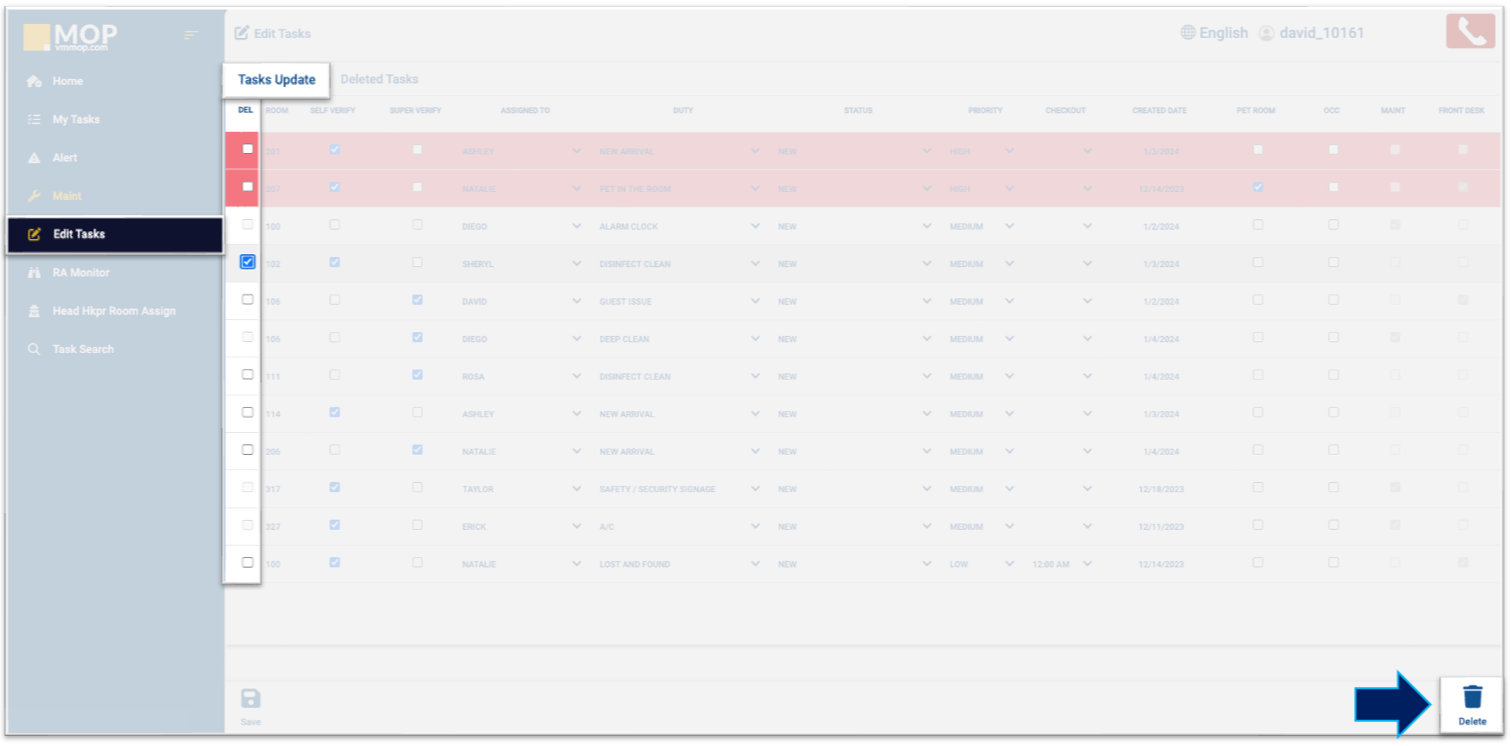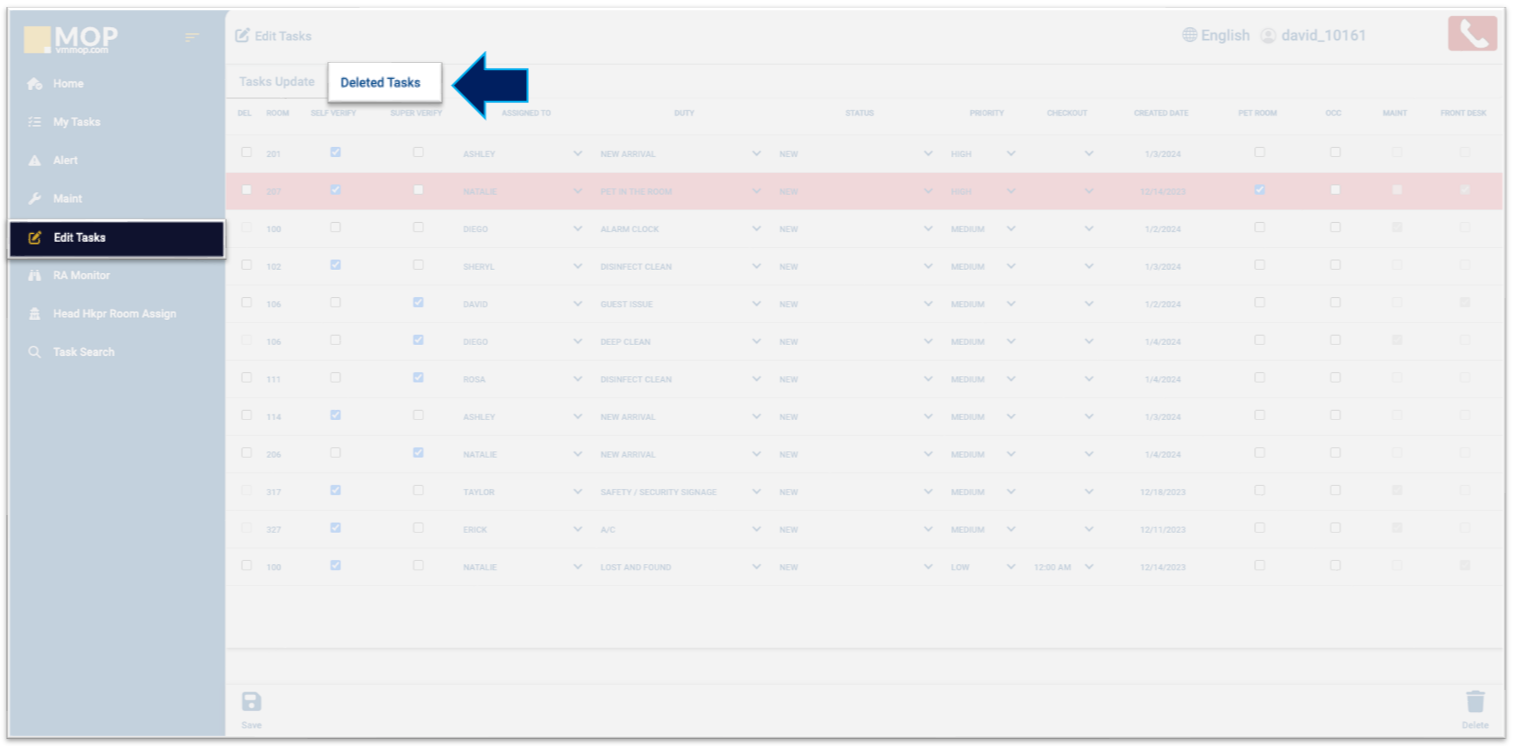Delete a Task (MOP 2.0)
Deleting a task is as simple as two clicks: select the task and then save.
Path: Edit Tasks > Tasks Update
1. In the "Tasks Update" tab, mark the checkbox in the "Del" column for the task you wish to delete.


For tracking and safety purposes, a maintenance task cannot be deleted. For instance, if a guest reports an issue in a room and the clerk logs it, no one should be able to delete the task until someone actually checks on it. This precautionary measure is crucial in various scenarios, especially when dealing with larger appliances such as water heaters, electrical systems, or door locks.
2. To confirm the deletion, click "Delete" at the bottom right.

3. After deletion, you can find all tasks in the "Deleted Tasks" tab.

Related Article(s)
Related Articles
Printable Guides (MOP 2.0)
We provide downloadable PDF guides covering key features and workflows in MOP 2.0. These printable guides are ideal for sharing in training sessions, posting at workstations, or carrying in the field — enabling quick reference without needing to log ...Understanding MOP 2.0 Icons and Their Functions
In MOP 2.0, icons are your gateway to managing tasks efficiently — editing, viewing, filtering, and deleting tasks depend on recognizing these visual cues. In this guide, you’ll learn what each icon does, where you'll see it, and why it’s important. ...Delete a Recurring Task (MOP 2.0)
A recurring cleaning task is a task that is set up to be repeated in time. Path: Recurring Tasks 1. Click on the pencil next to the task to delete. 2. Scroll down. 3. Check the "Delete" box. 4. Click Save. Related ArticlesRestore a Deleted Task (MOP 2.0)
Once a task is deleted, it can always be restored. Path: Edit Tasks > Deleted Tasks 1. From the "Deleted Tasks" tab... 2. Select the "Restore" box at the beginning of the task line you wish to restore. 3. Click "Restore" at the bottom of the page to ...First Steps Guidebook (MOP 2.0)
This guide provides you with the initial and primary steps to commence using MOP 2.0. - It is available in english. - Está disponible en español. - Il est disponible en français.